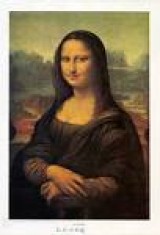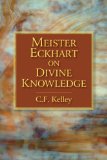Postmortem on Postmodern Art
Page 1 of 3 pages 1
2
3
>
- Full Article
Donald Kuspit’s withering critique of postmodern art, “The End of Art,” surgically exposes the mocking, entropic cynicism that has ravaged this creative ethic for decades. It is also an inspired defense of the great aesthetic formally known as “high art”.
by Wayne Owens

Remember that queer psychic malaise that kept nagging at you while you were sipping a glass of wine at that high-end art opening your friends dragged you to last month? How something in your soul couldn’t shake the feeling of vanity and emptiness that kept insinuating itself as you strolled among the unsatisfying pictures?
Are you still trying to find your way clear of the dense fog of soul negation and outright chicanery being offered up—or is it down?—by what still, despite all evidence to the contrary, lays claim to the appellation “The Art World?”
Take heart, my friend. You may be surprised to learn that it’s probably not necessary to consult your therapist…or your astrologer…or to up your dose of whatever pharmacological miracle you’re currently using these days to ward off The Demons.
Indeed, your reaction to much of what currently lays claim to the exalted status of “postmodern art” may be ironic proof of your insistent sanity. You are surely not alone. In fact you are in very, very good company.
Donald Kuspit’s withering critique of postmodern art is an inspired defense of the great aesthetic formally known as high art, as well as a surgical exposure of the mocking,
entropic cynicism which has ravaged this creative ethic for decades. His courageous book, The End of Art, makes the claim that ominous forces have overwhelmed the ancient understanding that art is purposed to serve our understanding of the transcendental.
Despite the ever-changing array of ephemeral art-theories and fashionable schools of strictly surface concern, Kuspit remorselessly outlines how what he describes as “postart” has purposely obliterated that unique gift which can relieve us of the agony of a stark materialism, and which alone enables us, mercifully, to exist with integrity in what is clearly a madhouse world. Kuspit begins where he sees the genesis of this relentless and willful obfuscation: with the famous readymades of Marcell Duchamp and the primal, pre-Adamic existentialism of Barnett Newman.
It was Duchamp who deliberately projected a sort of baffling double-mindedness onto his notoriously ordinary objects; who attempted to seduce the observer into the fantasy notion that his works of art were all and nothing at once—a simultaneous degradation-exaltation radiating from an elusive center which would vanish the instant it was conceptually apprehended.
Can one see such objects both ways—as everyday artifacts and elegant works of art simultaneously? That is exactly how Duchamp would like us to see his readymades. They have a double identity. They are socially functional artifacts that have been changed into sublime artistic masterpieces by the creative act of Duchamps’ psyche. But they retain their everyday functionality; they revert to it in the blink of a creative eye, or rather in the mind. In short, they embody aesthetic osmosis while remaining inert matter. Supremely ambiguous, they are supremely perverse; that is, they blur the difference between art and non-art, an act of differentiation all too often regarded as the gist of modern creativity. The tantalizing ambiguity that is the readymade precludes aesthetic idealization. When The Fountain, (1917) was praised as beautiful and tasteful, as occurred when it entered the museum, Duchamp became angry, for it was understood exclusively on the aesthetic plane, which destroyed its confused identity as art/non-art, that is, mentally art, physically non-art.
It was Duchamp’s attempt to dismiss the aesthetic responsibilities of the artist be feigning a sort of sublime indifference to it—by leeching it of emotion—and by therefore suggesting that a crippling ambiguity is the actual source-condition of existence; that indeed a kind of elemental confusion is the native and eternal condition of mankind. Duchamp intended to strike at the very heart of art itself, by denigrating aesthetics as a farcical absurdity. It is Duchamps’s insistence on a primal ambiguity that exposes his loveless nihilism—he retreated to the rigors of chess after relegating art to a sort of secondary concern—as well as his need to lay waste to the totality of culture which had come before him. Indeed Duchamp’s methods seem to embody what Blake decried as “ a pretence of Art to destroy Art” which has, not surprisingly, devolved over the decades into what Kuspit now dismisses as anti-art, or postart, or mere commercial entertainment and creative degradation.
Page 1 of 3 pages 1
2
3
>
- Full Article
{simplepaginate}
Page {current_page} of {total_pages} pages {pagination_links}
{/simplepaginate}
Well, lucky for us, I was just in Venice at this year’s Biennale, and have to say that the exhibit that grabbed me most, for all it’s aliveness and heart, and total intelligence, was that of collaterol artist Adi Da Samraj. http://www.adidabiennale.org is worth an online visit.
He has included the Spiritual into his art in the most beautiful ways.
Contemporary art is not dead, not ego-fuelled, as long as the art of Adi Da Samraj is out there.
Posted by .(JavaScript must be enabled to view this email address) on 07/31 at 11:22 AM











